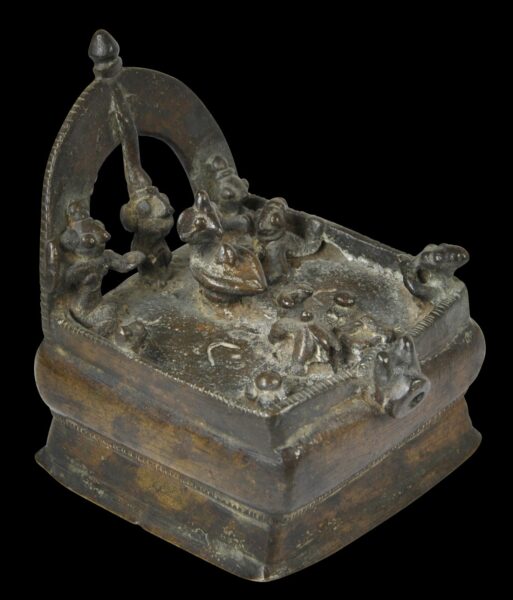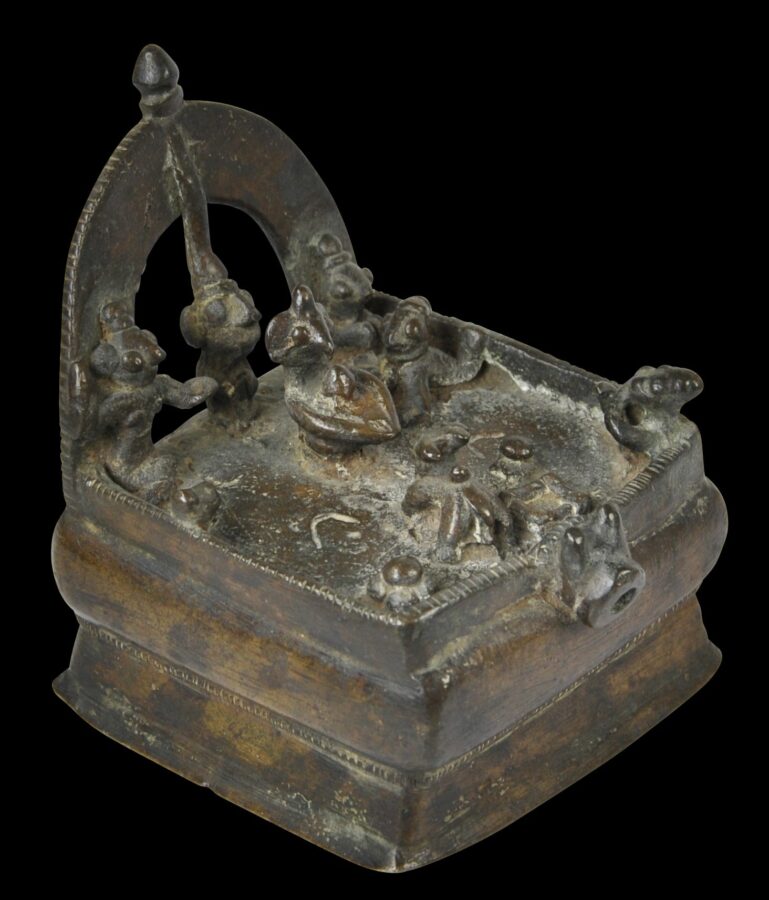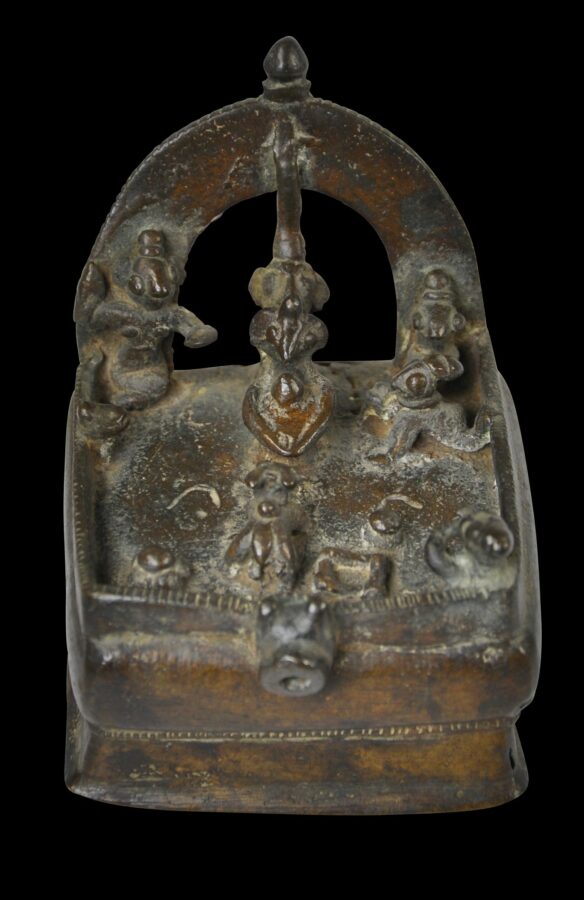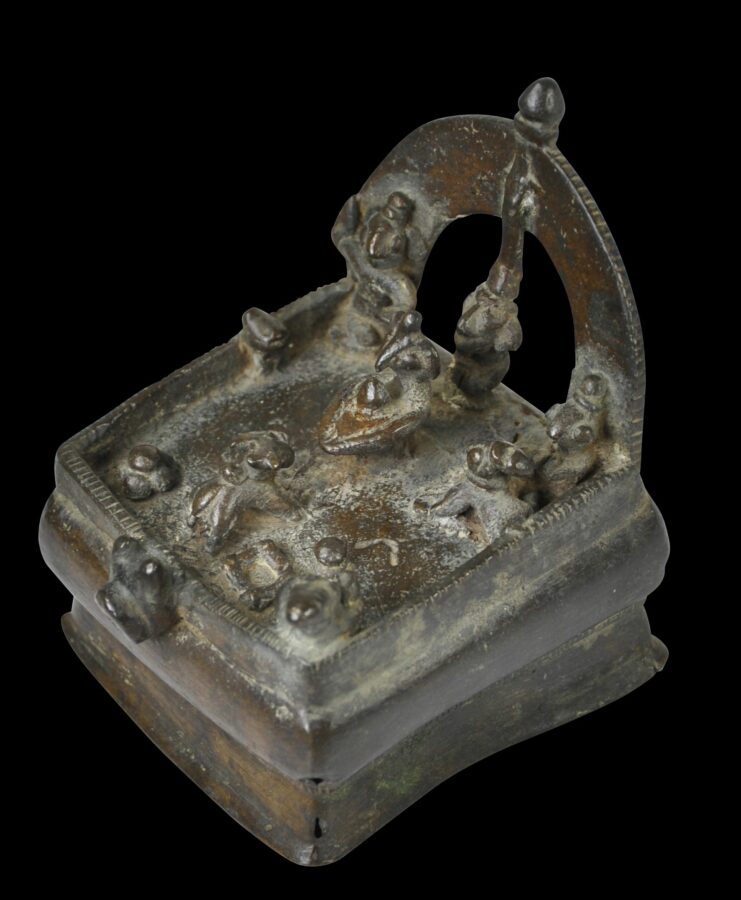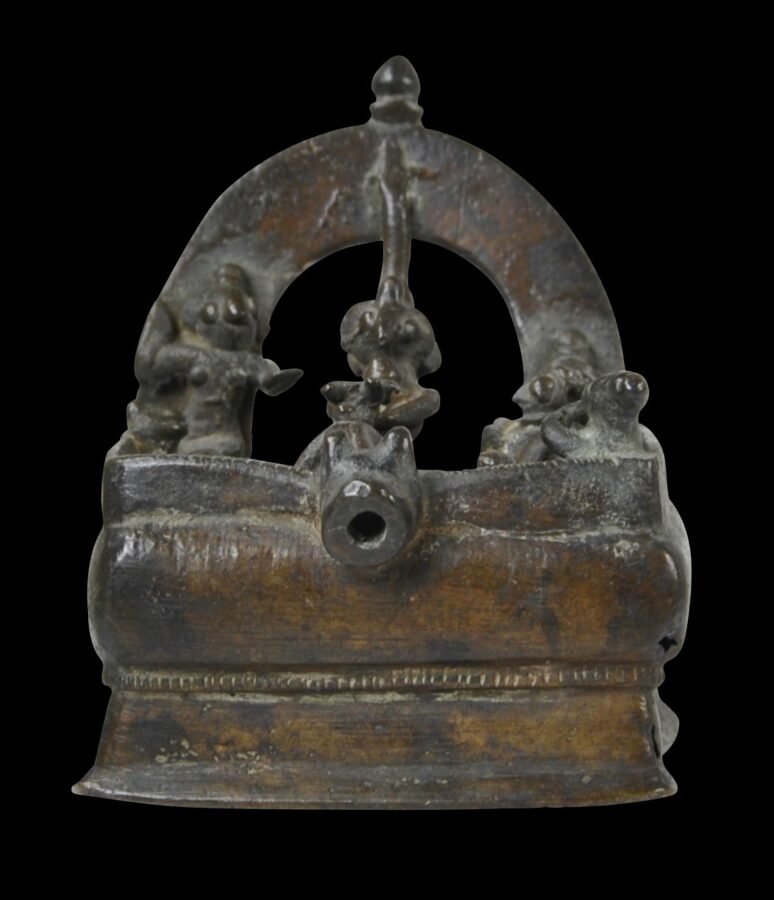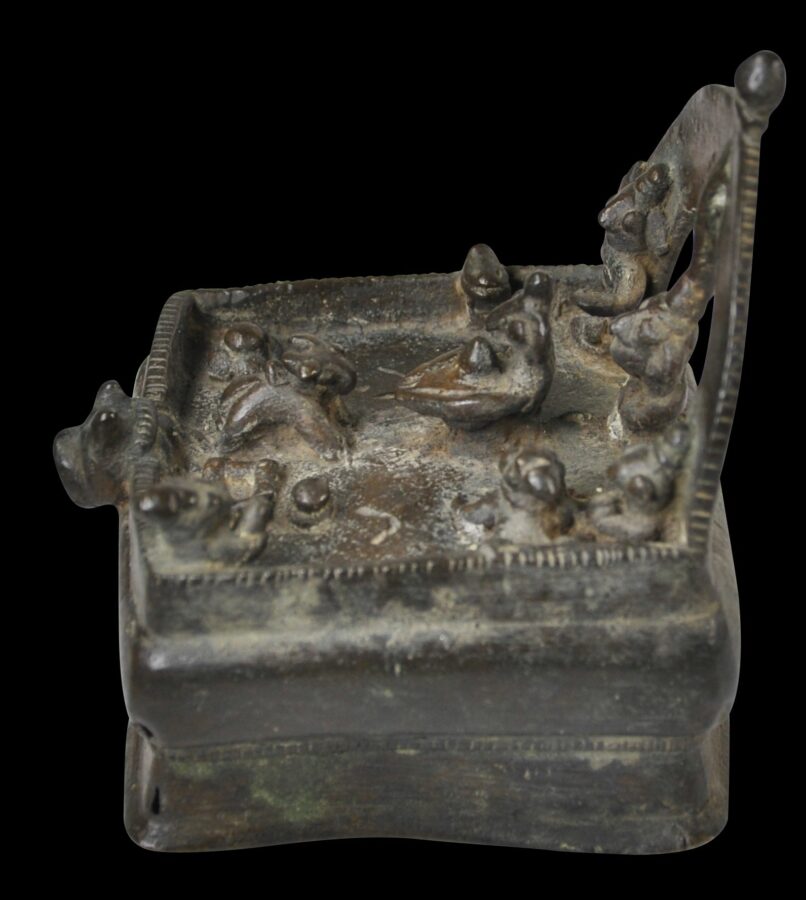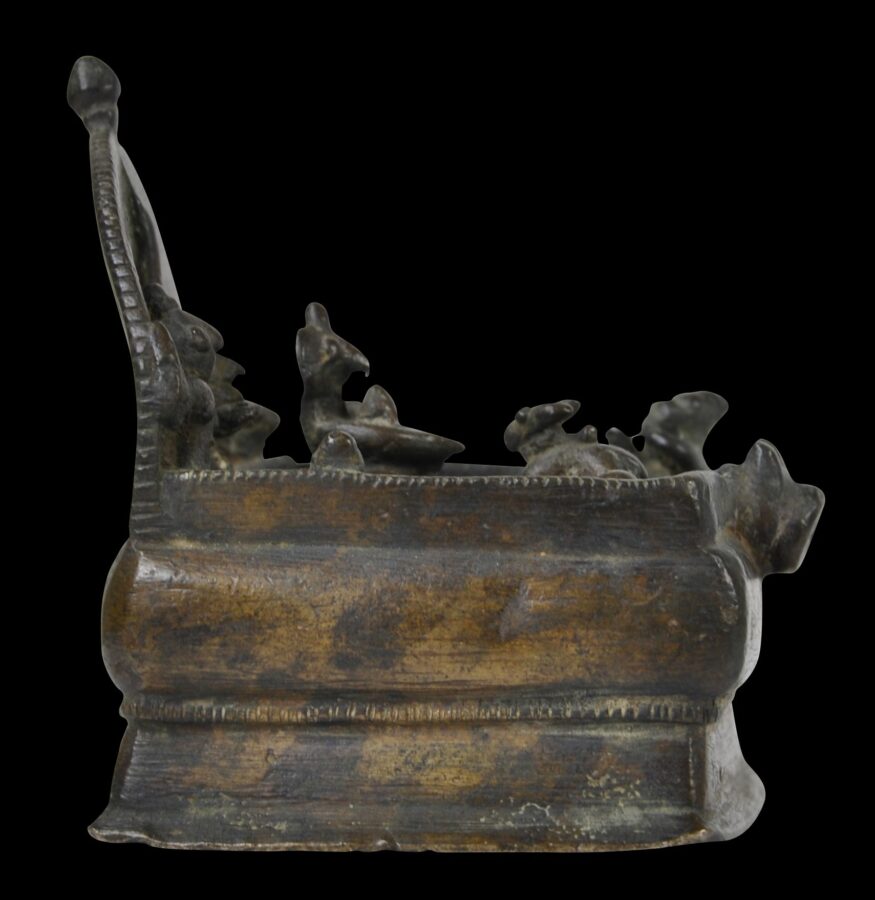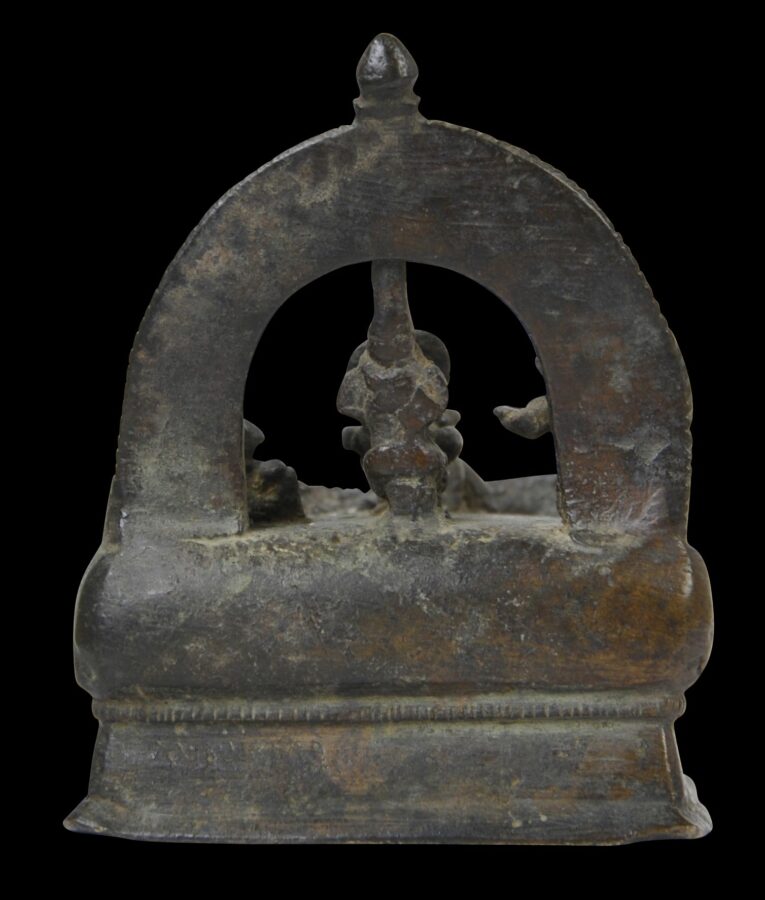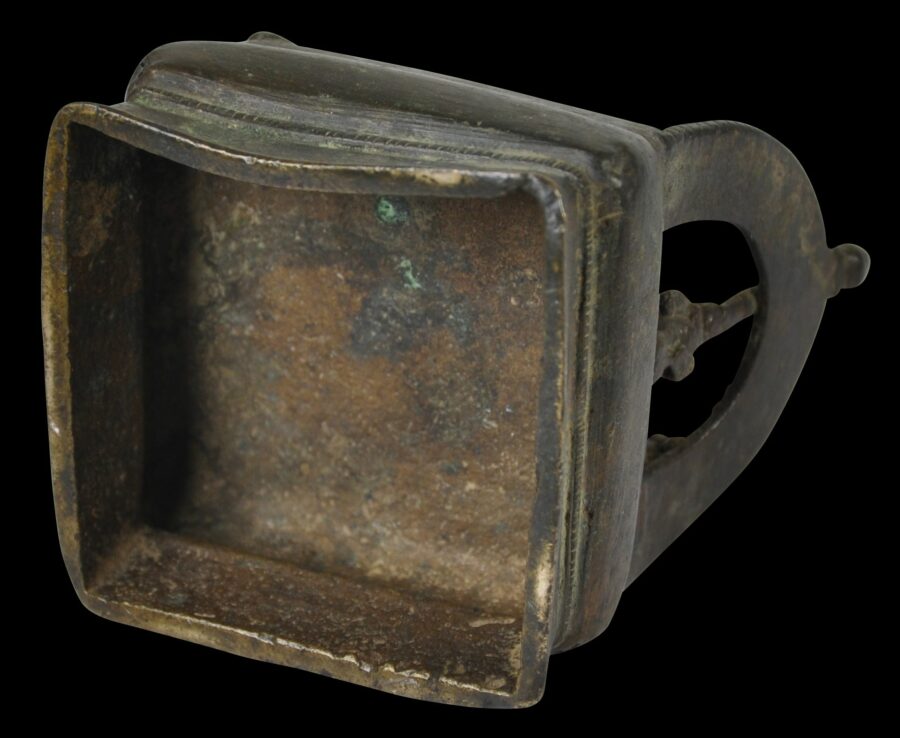Various members of the Shaivite ‘family’ are present around a central Shiva-lingam. Determining the identities of the deities is difficult but Ganesh, Krishna and Nandi are likely to be among them. The scene is complete with an arched, protective aureole which rises from the back of the bronze.
The shrine sits on a square base with contours rounded from ritual handling.
It is a miniature model of a much larger conception: the surface of the shrine has a wall and at the front is a zoomorphic head that allows drainage from whatever liquid offerings are used to lustrate the model.
Such shrines come from the small towns and villages of Maharashtra (the state that takes in Mumbai/Bombay). They were popular objects of worship in domestic settings. It was customary that these domestic shrines were tended regularly with daily worship and offerings.
The shrine is complete. It has a naive, ‘tribal’ charm, excellent puja (prayer) wear and a good, dark patina.
References
Aryan, K.C., Folk Bronzes: Of North Western India, Rekha Prakashan, 1973.
Dursum, B., et al, Change and Continuity: Folk and Tribal Art of India, Lowe Art Museum, University of Miami, 2004.


